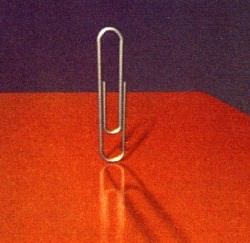|
3dfx: T-Buffer Technology
by Bubba "Masterfung" Wolford |
||||
|
Depth of Field How many times do we look around and our eyes constantly shift focus from image to image? Ever taken a camera and had the image so focused on one very specific part of the whole image that the entire rest of the picture is out of focus? We see this in movies and on TV all the time. Depth of Field (DoF) allows the producer to focus our attention on an actor in the foreground while what is happening in the background falls out of our attention. When the producer shifts the camera to a background image we then lose focus on the previous foreground image. Our eyes do this for us in the real world automatically but until now this kind of rendering technology has not been made available to game producers. 3dfx will now bring Depth of Field to the PC gaming arena. Not only does DoF allow for someone to focus our attention on an image on the screen but it also assists the gamer in establishing an idea of distance between objects while increasing the appearance of detail in the image which is brought into focus. While I am uncertain how DoF will play out in games during gameplay, the use for movie AVI's and cut-scenes are obvious. Never before have game producers had a technology to better control what they want gamers to see while being able to more effectively carry the storyline. This technology, like temporal anti-aliasing, will need to be coded into games so we will not see an immediate benefit from DoF but it is clear that DoF and temporal AA could become extremely popular among gaming companies. Electronic Arts, Lucas Arts and Epic games have already expressed interest is seeing these technologies in their games.
 The producer wants out attention on the ant in the foreground. Everything in the background is blurred out.
 A few second later the producer has refocused our attention to the ants in the back. This is what Depth of Field allows in your PC! *Images from "A Bug's Life," Copyright 1998, Pixar Animation Studios |
Soft Shadows and Reflectance Blur Two more effects of the T-Buffer are to allow true to life soft shadows and reflectance blur. Those games now on the market capable of taking advantage of stencil buffers are used to render shadows in games. Often times, however, these buffers display shadows that are unrealistic and plagued by sharp edges. The T-Buffer will allow for much softer and realistic looking shadows that look neither out of place nor irritating. Another advantage of the 3dfx T-Buffer is the process of reflectance blur (also referred to as soft reflectance.) This is the process whereby we can see the reflection of an object that is being held near or on top of a reflective surface such as polished wood or brushed stainless steel. In fact, the object is reflected in such a way that it is more focused on the end that is closer to the reflective surface and less focused (blurry) on the end that is furthest away from the surface. Very realistic!
 In the image above we can see the excellent soft shadow created by the paperclip. The part of the paperclip actually touching the table is in sharp focus. Just the opposite, however, for the top of the paperclip since it is further from the table. We can also see the reflectance blur from the paperclip on the table, and even the reflection has graduated focus! * Image Copyright The Association For Computing Machinery. 3dfx Market Strategy Whether you're a fan of 3dfx technology or not, one thing that commands respect is their market strategy. Since the release of the original Voodoo graphics board, 3dfx has moved virtually to the top of the heap in video card sales and technology. Even when Nvidia moved to 32-bit color, 3dfx steadied their course and remained with their philosophy that speed is KING. Any deviation from this course was unacceptable. Inevitably this decision infuriated some, who argued that 3dfx was not moving forward and was simply "milking" their current technology. While I am sure that some of you could argue that point effectively, with the release of the T-Buffer 3dfx has demonstrated that they knew exactly what they were doing and just what the market required. When Nvidia released their TNT and TNT2, the games out there on the market that supported 32-bit color were nearly nonexistent. Even today few games support 32-bit color. Nevertheless, many such games are in development and will arrive on the market soon. 32-bit color was an excellent selling point for Nvidia but never produced the excitement it could have due to the lack of games supporting 32-bit color. Go to Page Four: 32 bit Color
|
|||
|
Copyright © 1997 - 2000 COMBATSIM.COM, INC. All Rights Reserved. Last Updated July 30th, 1999 |
||||
